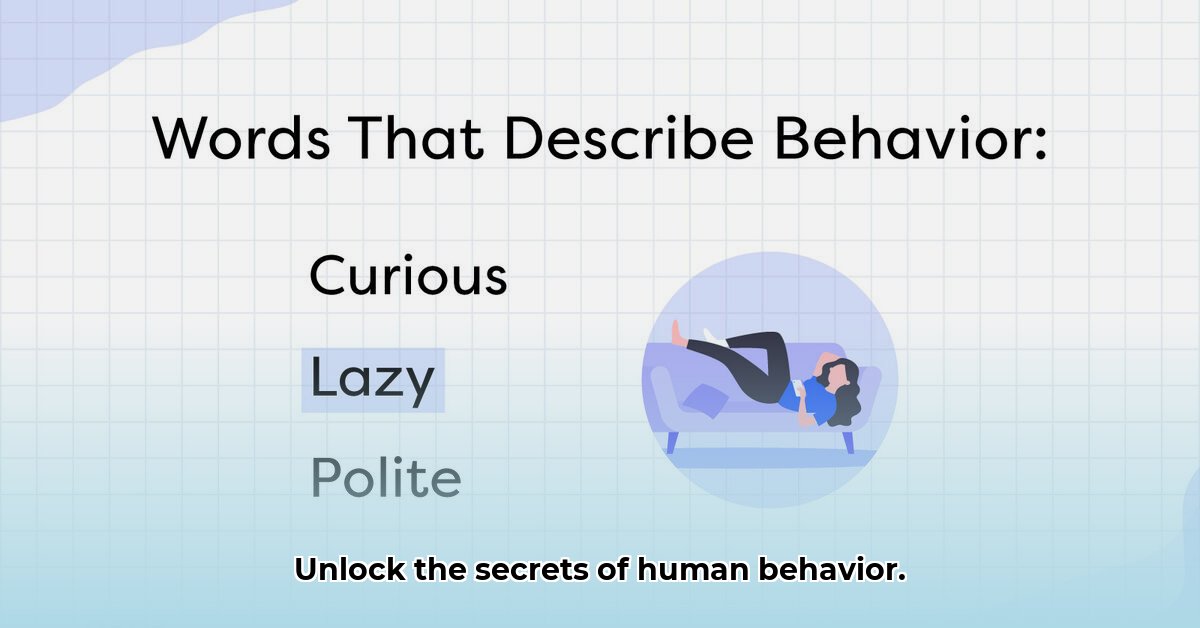Decoding the Human Tapestry: An In-Depth Exploration of Behavior
Human behavior, a complex interplay of conscious decisions and ingrained habits, shapes our interactions and experiences. From seemingly simple actions like sharing a toy to complex decisions made in corporate boardrooms, behavior is the outward manifestation of our inner world interacting with the environment. This guide delves beyond mere observation, providing a structured framework for understanding the “why” behind human actions. We’ll explore the multifaceted nature of behavior, examining motivational drivers, contextual influences, and practical applications for deciphering the human experience.
Categorizing Human Actions: A Multifaceted Approach
To navigate the labyrinth of human behavior, we can employ a categorical approach. Actions can be classified based on several criteria:
- Observability: Some behaviors are overt, readily visible to the observer, like laughter or a raised hand. Others are covert, hidden from plain sight, like internal anxieties or silent contemplation. This distinction highlights the importance of recognizing both the visible and invisible aspects of behavior.
- Intentionality: Actions can be deliberate, driven by conscious intent, such as offering a compliment or extending a helping hand. Conversely, actions can be unintentional, occurring without conscious planning, perhaps a careless remark or an accidental bump. Understanding intent is crucial for interpreting the meaning behind an action.
- Rationality: Human behavior can be driven by logic and reason, exemplified by saving for retirement or adhering to a healthy diet. Alternatively, actions can stem from impulsive desires or emotional reactions, like making an impulse purchase or succumbing to road rage. Recognizing the interplay of logic and emotion is essential for understanding the complexities of human behavior.
These categories offer distinct perspectives, allowing us to analyze the same action through multiple lenses and appreciate the nuanced interplay of internal and external factors.
The Engine of Action: Exploring Motivational Drivers
Motivation, the driving force behind our actions, is a dynamic interplay of internal drives and external influences. We’re propelled by two primary motivational forces:
- Intrinsic Motivation: These are internal rewards, the inherent satisfaction or enjoyment derived from an activity itself. A child engrossed in play, an artist lost in creation, or a scientist driven by curiosity—these are all examples of intrinsic motivation.
- Extrinsic Motivation: These are external rewards or incentives, such as praise, recognition, money, or the avoidance of punishment. A student studying for a good grade, an employee working for a promotion, or an individual adhering to traffic laws—these are driven by extrinsic motivation.
Often, our actions are fueled by a combination of intrinsic and extrinsic factors. Deciphering these motivational drivers is key to understanding the “why” behind human behavior.
Context is Key: The Influence of Environment on Behavior
Imagine witnessing an outburst of anger. Is it at a crowded sporting event or a quiet library? The context significantly alters our interpretation of the behavior. Our physical and social environments exert a powerful influence on our actions. Cultural norms, social expectations, the presence of others, and even the time of day can shape how we behave. A simple gesture can carry different meanings across cultures, and an individual might act differently in a formal setting compared to a casual gathering with friends. Recognizing the pervasive impact of context is crucial for accurately understanding behavior.
Practical Applications: Deciphering and Responding to Behavior
Translating this knowledge into practical application offers significant benefits in various aspects of life:
- Sharpened Observation: Develop keen observational skills. Pay attention not only to the behavior itself but also to the surrounding circumstances, the individual’s emotional state, and the subtle cues within the environment. This holistic approach provides a richer understanding of the situation.
- Motivational Analysis: Delve beneath the surface. Attempt to identify the underlying motivations driving the behavior. Is the individual seeking approval, avoiding conflict, or pursuing a specific goal? Understanding motivations unlocks deeper insights into the reasons behind actions.
- Empathetic Engagement: Step into the other person’s shoes. Empathy, the ability to understand and share the feelings of another, enhances our ability to connect with others and interpret their actions with greater sensitivity. Consider the individual’s perspective, their background, and their potential reasons for behaving in a particular way.
- Adaptive Communication: Recognize the dynamic nature of human interaction. Effective communication requires adapting our approach to different personalities and situations. What works in one context might not work in another. Flexibility and sensitivity are key to navigating interpersonal dynamics effectively.
Behavior in Action: Real-World Applications and Future Directions
Understanding human behavior is not confined to theoretical exploration; it has practical applications in diverse fields. In education, insights into motivation and learning styles can inform teaching practices, creating engaging learning environments. Marketing campaigns leverage principles of persuasion and influence to connect with target audiences. Healthcare professionals utilize behavioral insights to improve patient adherence to treatment plans and promote healthy lifestyles. The ongoing research in behavioral psychology continues to unveil new insights into human behavior, promising even more effective interventions and a deeper understanding of what makes us human.
- Red Cloud, NE: Discover Willa Cather’s Legacy - April 11, 2025
- Remember Old Social Media Sites? Their Rise and Fall - April 11, 2025
- How many days till Feb 3?Accurate Countdowns & Tools - April 11, 2025
















